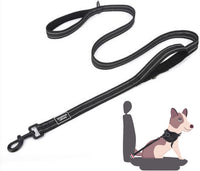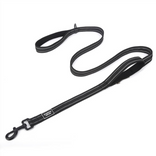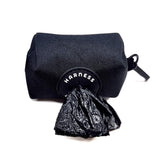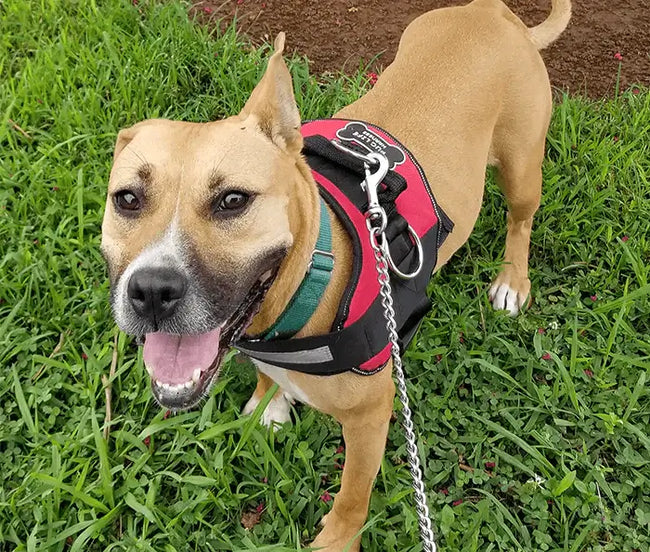Keeping Your Dog Safe During Flea & Tick Season

Fleas and ticks love warm weather, and in many states, that means they start appearing around springtime. Once temperatures drop below 45°F, these parasites become less active. However, with climate changes, fleas and ticks are showing up earlier each year. It's essential to know when flea and tick season peaks in your area and take preventive measures to keep your dog safe.
Fleas and Ticks: Small but Dangerous

Fleas and ticks are parasites that feed on the blood of animals and humans. They can transmit serious diseases. For instance, the black-legged tick (or deer tick) can carry Lyme disease, leading to severe health issues in dogs. Fleas can carry tapeworm eggs that dogs might ingest while grooming. Despite their small size, these pests can cause big problems.
When Is Flea and Tick Season in Your State?

Flea and tick seasons vary by state. Here’s a general idea:
All-Year:
- Alabama
- California
- Florida
- Georgia
- Hawaii
- Louisiana
- Mississippi
- Nevada
- Oregon
- South Carolina
- Texas
- Washington
March to July:
- Utah
- Wyoming
March to September:
- Colorado
- Kansas
March to November:
- Iowa
- Maryland
- Massachusetts
- Michigan
- Missouri
- New Jersey
- New York
March to December:
- Delaware
- Kentucky
- Ohio
- Rhode Island
April to July:
- Montana
April to August:
- Idaho
April to September:
- Illinois
- Indiana
- North Dakota
- Oklahoma
- Tennessee
- Vermont
- Virginia
Fleas Thrive in Mild Temperatures

Fleas thrive in humid areas with tall grasses and shrubs. Without a host, they live only 1-2 weeks but can lay up to 50 eggs per day once they feed on your dog.
Fleas can hide and wait for warmer weather, making them a year-round threat in many places. Their lifecycle includes four stages: egg, larvae, pupa, and adult.
When conditions aren’t ideal, such as when temperatures dip below 45°F, the pupae can stay in their cocoons until it warms up.
Ticks Can Survive Long Periods Without Hosts
Ticks can go months without feeding and are often found in wooded or moist areas. They become active in spring or on warmer days. Cold winters can reduce tick populations, but warmer years mean more ticks earlier in the season.
Ticks tend to hide in dead leaves, wood piles, or moist areas near water. Even after heavy rainfalls, ticks can be common.
During winter, they burrow for insulation and enter a period of low energy, reemerging in spring or whenever it gets warmer.
Spotting Fleas on Your Dog
Signs of fleas include persistent itching, fur loss, flaky skin, scabs, and red bumps. You might see fleas or "flea dirt" (tiny black specks of flea excrement) on your dog’s belly or joints.
Flea dirt is actually flea feces and looks like small black flakes. If you notice your dog persistently itching, check for these signs.
Dealing with Fleas and Ticks

There are many flea treatments available, including pills, chewables, and topical treatments. For ticks, regularly check your dog after they’ve been outside. To remove a tick:
-
Part your dog’s fur and locate the tick.
-
Use tweezers to grasp the tick's head close to the skin.
-
Pull straight out without twisting.
-
Dispose of the tick in rubbing alcohol.
-
Clean the bite area and monitor for irritation.
Prevention Is Key
Flea and tick prevention is crucial year-round. Here are some tips to help keep your furry friend safe:
-
Regular Vet Visits: Make sure your dog has regular check-ups to catch any issues early.
-
Flea and Tick Preventatives: Use vet-recommended flea and tick preventatives. These can include topical treatments, chewable tablets, and collars.
-
Home Cleanliness: Keep your home clean by vacuuming regularly, especially in areas where your dog spends a lot of time. Wash your dog’s bedding frequently.
-
Yard Maintenance: Keep your yard well-maintained by mowing the lawn regularly and clearing tall grasses and brush where fleas and ticks can thrive.
-
Regular Grooming: Regularly groom your dog to keep their coat healthy and check for any signs of fleas or ticks.
-
Stay Informed: Keep up with local flea and tick forecasts to know when these pests are most active in your area.
While you're out and about with your dog, keeping them safe from fleas and ticks is just one part of the equation.
Making sure they’re comfortable and secure on walks is another. That’s where the Joyride Harness comes in. Designed for comfort and control, makes walks easier and safer for both you and your dog. Its easy-to-use design and reflective features ensure that you and your furry friend can enjoy your time outside, worry-free.
